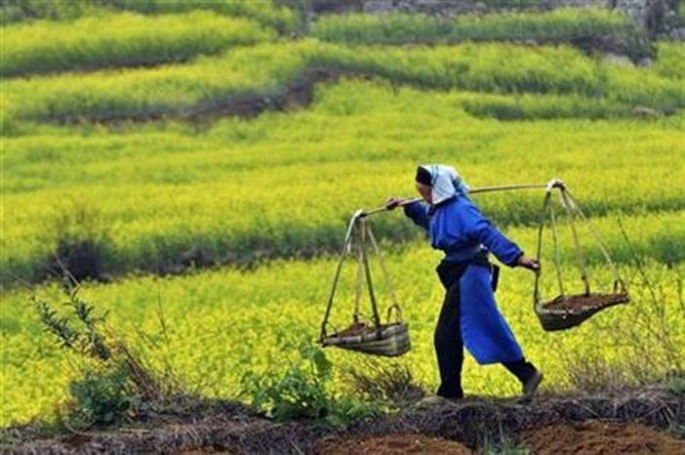A new study by Chinese scientists has found that China's reserves of phosphorus, one of the key elements for growing food, could be drained within the next 35 years if the country maintains its current production rate, the Xinhua News Agency reported.
But the country may still delay exhausting its phosphorus reserves by more than 20 years if it would improve the agronomic use efficiency of the mineral to the average level of 80 percent, similar to that in developed countries, without impairing current crop yields, according to the study, published this week in the U.S. journal Proceedings of the National Academy of Sciences.
Zengwei Yuan of Nanjing University and colleagues made a model the phosphorous cycle in China since the 1600s to evaluate the mineral's potential for eutrophication, which may lead to algal blooms, plant overcrowding and oxygen depletion.
The researchers found that phosphorus mining intensified in China, particularly during the last 60 years, to feed rising populations and supply the demand for animal protein.
According to the researchers, China's annual phosphorus extraction reached 12.50 million metric tons in 2012, accounting for over 40 percent of the global phosphorus production. They said that about 70 percent of the domestically mined phosphorus was used to make synthetic fertilizers.
The study also indicated that Chinese farmers had overused phosphorus. In 2012, an average use of 80 kilograms of phosphorus per hectare were used for crop production in China, more than double the figure that can be assimilated by crops and far higher than the average level among developed countries.
On the other hand, only 4 percent of natural phosphorus resources were eventually ingested by Chinese residents in 2012, which is lower than the 5 percent in the United States.
Since 2003, when it became a net phosphorus exporter, China has exported mainly phosphorus-containing chemicals such as fertilizers and pesticides, while importing crops, specifically soybeans from the Argentina, Brazil and the US.
This resulted in the rapid accumulation of phosphorous in China's surface waters and lands in the last decade.
Based on the researchers' analysis, high phosphorous emission densities and their potential eutrophication effects occurred mainly in prosperous eastern coastal provinces, which have relatively higher population density.
In eastern China, the average phosphorous emission density was 495 kilograms per square kilometer per year, eightfold higher than in western areas.
"The findings showed that unreasonable exploitation and utilization of phosphorus resources is intensifying China's phosphorus crisis, with water eutrophication problem that comes with the crisis becoming increasingly apparent," Yuan told Xinhua. "Our work highlighted the importance and urgency of sustainable utilization of China's phosphorus resources."



























